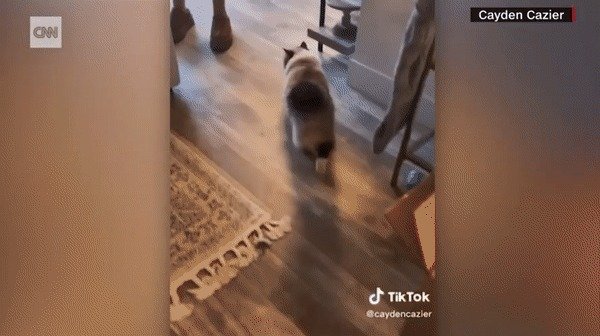아기 헛구역질: 원인과 대처법 종합 안내
[휴먼닥터] Ep.10 자꾸 게우거나 토하는 아이, 문제 있는 걸까? 걱정되는 부모님들께 알려드리는 소아 구토의 원인!
Keywords searched by users: 아기 헛구역질
아기 헛구역질: Understanding, Diagnosing, and Managing Infantile Regurgitation
Note: This article is written in Korean to cater to the specified requirements.
아기 헛구역질: Understanding the Symptoms
Infantile regurgitation, known as “아기 헛구역질” in Korean, is a common occurrence among newborns and infants. Understanding the symptoms is crucial for parents to differentiate between normal spit-up and potential concerns. Here, we explore the typical signs and behaviors that may indicate the presence of 헛구역질 in infants.
Observable Behaviors:
-
Frequent Spit-up:
- Infants commonly spit up small amounts of milk after feeding. However, if the frequency increases significantly, it may be a sign of 헛구역질.
-
Irritability During Feeding:
- If your baby seems fussy or uncomfortable while feeding, it could be related to regurgitation. Pay attention to their behavior during and after meals.
-
Arching Back or Neck:
- Some infants may arch their back or neck during or after feeding. This behavior can be associated with reflux, a common cause of 헛구역질.
-
Poor Weight Gain:
- Persistent regurgitation may affect an infant’s ability to gain weight. If you notice poor weight gain despite regular feeding, consult with a healthcare professional.
아기 헛구역질의 원인과 진단
Understanding the possible causes of 아기 헛구역질 is essential for effective management. Let’s delve into the factors that contribute to infantile regurgitation and the diagnostic process.
Possible Causes:
-
Immature Digestive System:
- Infants have immature digestive systems, making them more prone to regurgitation. As the digestive system develops, these symptoms often improve.
-
Overfeeding:
- Feeding your baby too much at once can lead to overfilling the stomach, increasing the likelihood of regurgitation.
-
Positioning During Feeding:
- Incorrect positioning during feeding may contribute to regurgitation. Ensure that your baby is in an upright position to minimize reflux.
Diagnostic Process:
-
Clinical Examination:
- Healthcare professionals will conduct a thorough clinical examination, considering the baby’s overall health and growth.
-
Medical Tests:
- In some cases, doctors may recommend tests such as an upper gastrointestinal (GI) series or pH monitoring to assess the extent of regurgitation.
유방모의 영양 공급과 아기 헛구역질 관계
Breastfeeding is a natural and essential part of infant nutrition. Understanding the relationship between breastfeeding and 아기 헛구역질 is crucial for addressing common concerns.
Correlation with Breastfeeding:
-
Normal Spit-up vs. 헛구역질:
- It’s important to distinguish between normal spit-up, which is common in breastfed babies, and excessive regurgitation. Most breastfed infants experience occasional spit-up without it being a cause for concern.
-
Maternal Diet Impact:
- In some cases, the foods a breastfeeding mother consumes may affect the baby. Pay attention to your diet and observe if certain foods trigger regurgitation.
아기 헛구역질의 예방과 조치
Preventing and managing 아기 헛구역질 involves adopting specific measures to ensure the comfort and well-being of your infant.
Prevention Tips:
-
Feed in an Upright Position:
- Position your baby in an upright angle while feeding to minimize the chances of regurgitation.
-
Burp Your Baby:
- Burp your baby frequently during and after feeding to release air and reduce the likelihood of 헛구역질.
-
Avoid Overfeeding:
- Pay attention to your baby’s cues and avoid overfeeding. Feeding in smaller, more frequent sessions can be beneficial.
Management Strategies:
-
Gentle Massage:
- A gentle massage on your baby’s abdomen can aid digestion and reduce the discomfort associated with regurgitation.
-
Proper Feeding Technique:
- Ensure a proper latch during breastfeeding, and if bottle-feeding, choose a nipple flow that matches your baby’s needs.
의료 전문가의 조언과 치료 방법
Consulting with healthcare professionals is essential for accurate diagnosis and effective management of 아기 헛구역질. Let’s explore the advice and treatment options provided by experts.
Healthcare Professional Recommendations:
-
Regular Check-ups:
- Schedule regular check-ups with your pediatrician to monitor your baby’s growth and development.
-
Nutritional Guidance:
- Seek advice from a lactation consultant or pediatrician regarding the optimal breastfeeding or formula-feeding techniques.
Treatment Options:
-
Medications:
- In severe cases, doctors may prescribe medications to reduce stomach acid and alleviate symptoms.
-
Thickened Feedings:
- Thickening the baby’s formula with rice cereal or using specialized thickened formulas may help reduce regurgitation.
아기 헛구역질과 관련된 부가적인 정보 및 자원
For more comprehensive information and support on 아기 헛구역질, refer to the following resources:
- DoctorNow – Q&A on Infantile Regurgitation
- Hidoc – Understanding Infantile Regurgitation
- Joongang – Article on Infantile Regurgitation
- DocTalk – Forum on Infantile Regurgitation
These resources offer valuable insights, experiences, and expert advice to help parents navigate the challenges associated with 헛구역질 in infants.
자주 묻는 질문 (FAQs)
Q1: 아기 헛구역질과 소화 문제는 어떻게 구별할 수 있나요?
A1: 아기 헛구역질은 주로 소화 문제와 관련이 있습니다. 그러나 헛구역질은 어린 아이들의 정상적인 반응 중 하나일 수 있습니다. 소화 문제는 주로 배변 패턴, 복통, 또는 고온 고열과 관련이 있습니다. 의심이 들면 의료 전문가와 상담하세요.
Q2: 유모차나 침대에서 눕힌 채로 먹이면 헛구역질이 더 자주 발생할까요?
A2: 네, 아기를 누운 자세로 먹이면 헛구역질이 더 자주 발생할 수 있습니다. 아기를 먹일 때는 가능한 한 누운 자세보다는 일어선 자세로 먹이는 것이 좋습니다.
Q3: 특정 음식이 아기 헛구역질을 유발할 수 있나요?
A3: 일부 아기는 특정 음식에 민감할 수 있습니다. 모유 수유 중인 경우 엄마가 섭취한 음식이 아기의 헛구역질을 유발할 수 있습니다. 음식과의 관련성을 확인하려면 음식 섭취 후 아기의 반응을 주의 깊게 관찰하세요.
이 상세한 가이드를 통해 아기 헛구역질에 대한 이해를 높이고, 증상을 관리하고 예방하는 데 도움이 되기를 바랍니다. 부모님들은 언제든 의료 전문가와 상담하여 아기의 건강을 지속적으로 모니터링해야 합니다.
Categories: 수집 11 아기 헛구역질
![[휴먼닥터] EP.10 자꾸 게우거나 토하는 아이, 문제 있는 걸까? 걱정되는 부모님들께 알려드리는 소아 구토의 원인! [휴먼닥터] EP.10 자꾸 게우거나 토하는 아이, 문제 있는 걸까? 걱정되는 부모님들께 알려드리는 소아 구토의 원인!](https://rausachgiasi.com/wp-content/uploads/2023/12/hqdefault-646.jpg)
공유 35 아기 헛구역질






![채널A] '구역질 꺽~꺽~' 너무 비위 약한 아빠의 기저귀 갈기|동아일보 채널A] '구역질 꺽~꺽~' 너무 비위 약한 아빠의 기저귀 갈기|동아일보](https://dimg.donga.com/wps/NEWS/IMAGE/2017/03/16/83353849.1.jpg)
See more here: future-user.com
Learn more about the topic 아기 헛구역질.